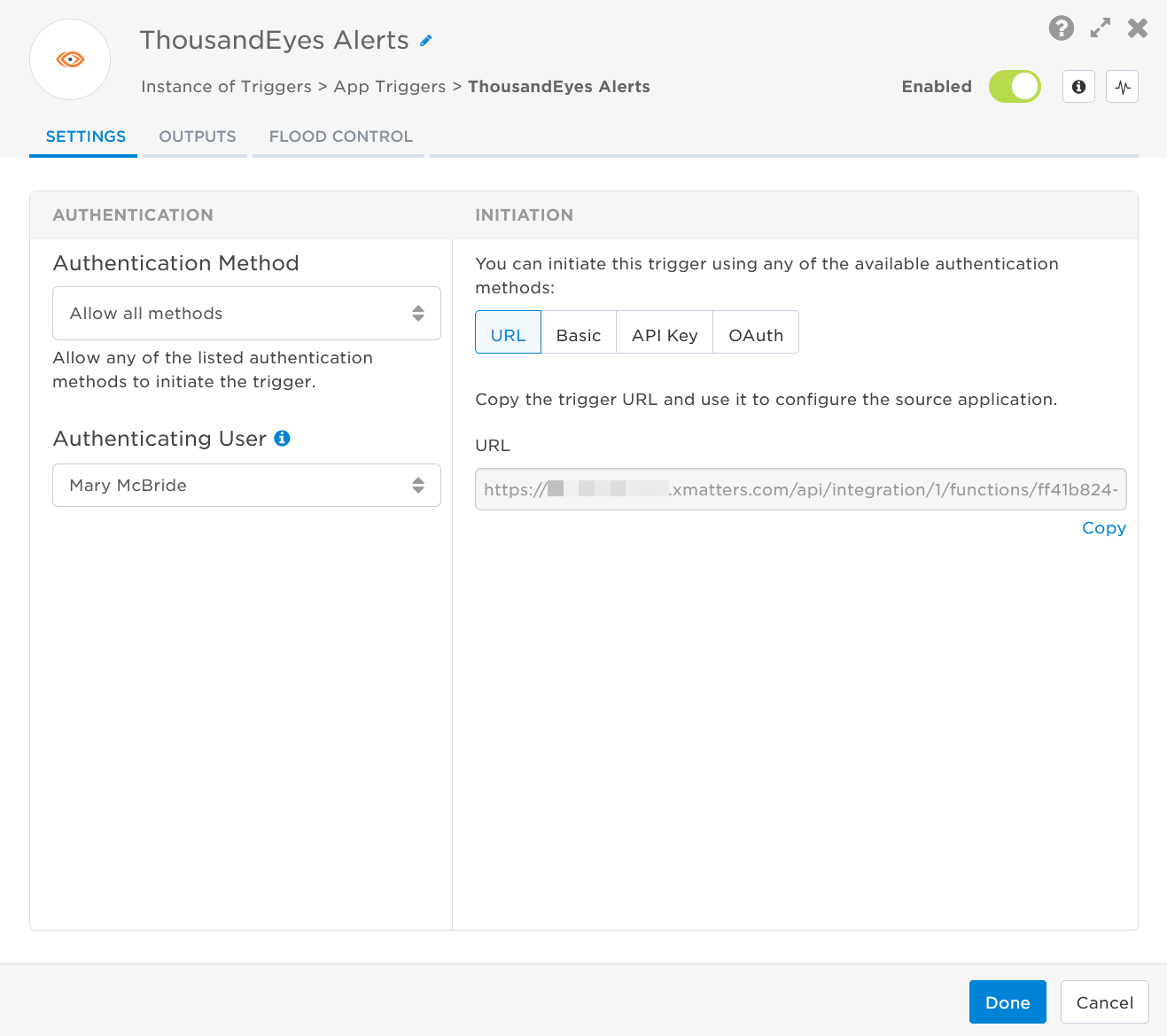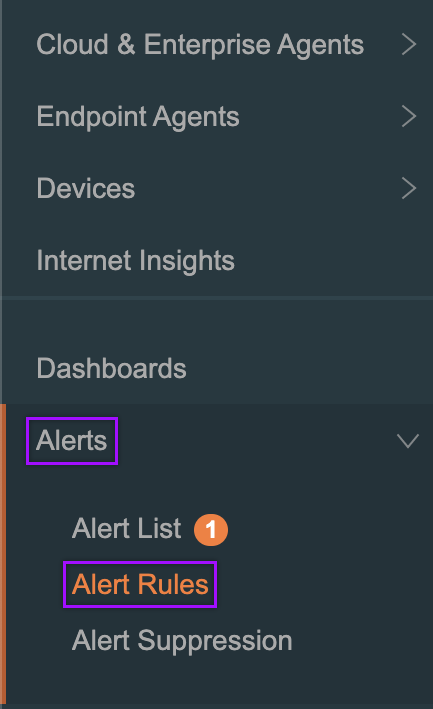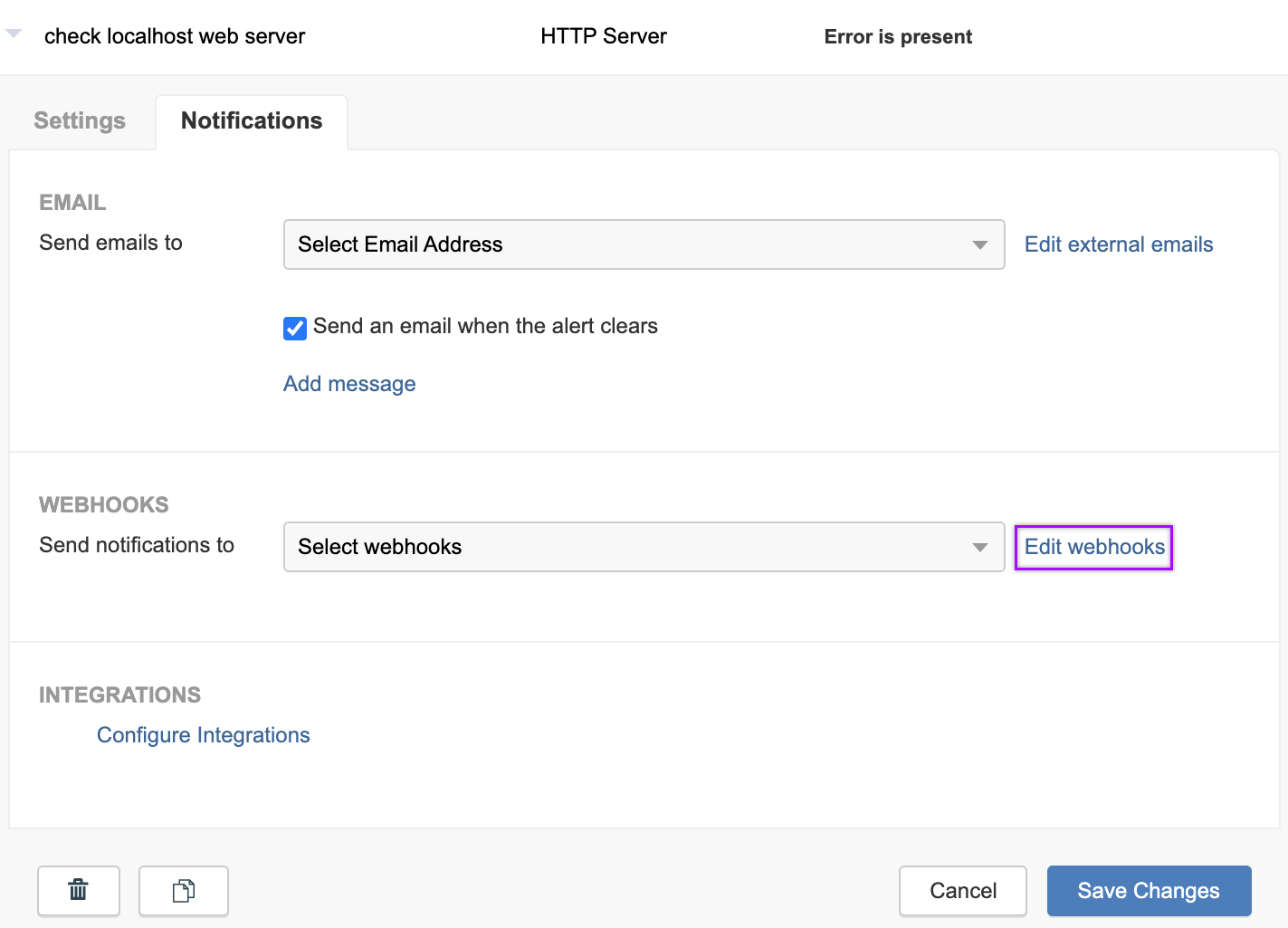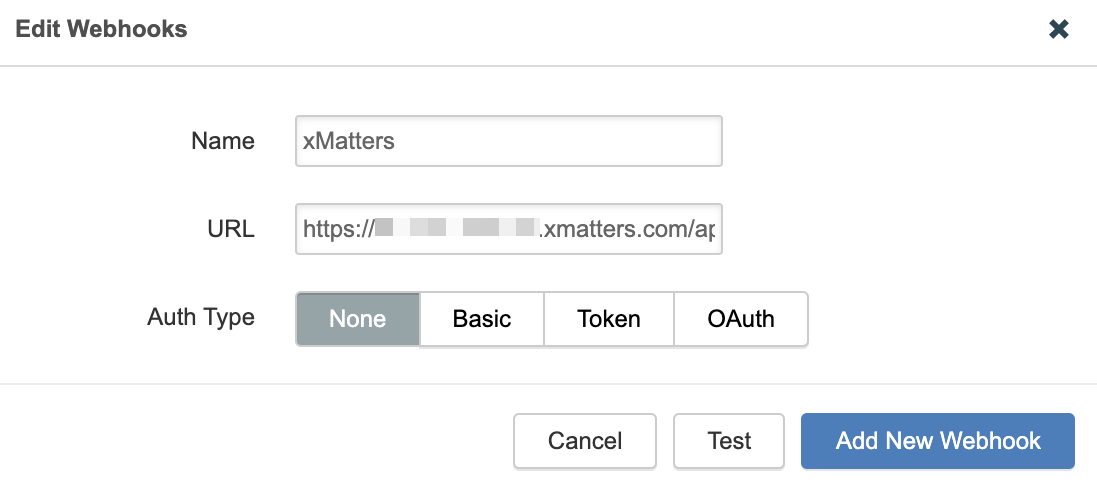ThousandEyes Alerts
The built-in ThousandEyes Alerts trigger initiates flows when it receives a signal from a ThousandEyes webhook.
Add the ThousandEyes Alerts trigger to the canvas
- Go to the Triggers tab in the palette, expand the App Triggers section, and drag the trigger onto the canvas.
- Double-click the trigger (or click the pencil icon).
- Set the authenticating user, and then copy the URL — you'll use this to set up the webhook in ThousandEyes.
Alternatively, you can create an integration user to use as the authenticating user.

- Click the Flood Control tab to edit the trigger's default flood control settings. For more information about these settings, see Trigger Flood Control.
- Click Done.
- On the flow canvas, connect the steps you want to run when xMatters receives a request to that URL.
You're now ready to configure ThousandEyes to target the trigger.
Configure ThousandEyes to send requests to the trigger URL
To have ThousandEyes send alerts to the flow trigger, you need to configure a webhook and set it to use the trigger URL.
- In ThousandEyes, go to Alerts > Alert Rules.

- Select the Alert Rule you want to use to notify xMatters.
- Click the Notifications tab.
- In the Webhooks section, click Edit webhooks.

- Click Add New Webhook.
- Fill in the following fields on the Edit Webhooks screen:

- Name: Give the webhook a unique name.
- URL: Paste the trigger URL you copied from Flow Designer.
- Add the target names of any recipients you want to notify when the monitor creates an alert to the end of the URL.
- For URL authentication, use an ampersand to attach recipients. For example, if you want to notify Emma Pearson and the on-call members in the group responsible for the Antares service, you'd add &recipients=epearson,antares to the URL.
- For other authentication types, use a question mark to attach recipients. For example, if you want to notify Barry Gull and the on-call members in the group responsible for the Cassiopeia service, you'd add ?recipients=bgull,cassiopeia to the URL.
- You must URL-encode any special characters or spaces in the target names.
- For example, if you want to notify Emma Pearson, Mary McBride, and the on-call members in the Monitor Team responsible for the service, you'd add ?recipients=epearson,mmcbride,monitor%20team to the URL.
- You must URL-encode any special characters or spaces in the target names.
- If you're using URL Authentication, leave the Auth Type set to None. If you use Basic Authentication, set the Auth Type to Basic and enter the Username and Password information.

- Click Add New Webhook.
- In the Webhooks section, find and select the webhook you just created.

- Click Save Changes.
You're ready to use the webhook to trigger automated flows, including steps such as sending alerts and initiating incidents, though we always recommend testing before putting things into use.
Outputs
The trigger has the following outputs you can use as inputs to steps further along the flow.
|
Label |
Description |
|---|---|
| Recipients | List of targeted recipients. Recipients are set by adding a recipients query parameter to the trigger URL when you configure the webhook in ThousandEyes. |
| Signal Mode | Determines the flow path to follow, based on the value of the Event Type parameter. |
| Signal ID | Key or identifier used to terminate or correlate events/signals |
| ThousandEyes Alert ID | Unique ID of the alert. |
| Alert Rule Expression | Conditions set in ThousandEyes that trigger the alert. |
| Alert Rule Name | Name of the alert rule as provided by ThousandEyes |
| Alert Start Time | Date and time stamp of when the alert started in ThousandEyes. |
| Alert URL | Direct link to the ThousandEyes alert. |
| Event ID | Unique ID of the event. |
| Event Type | Type of event. |
| Test Name | Name of the ThousandEyes test that triggered the alert. |
| Type | Type of alert being triggered. |
| Violation Count | Number of ThousandEyes agents currently breaking the alert rule. |
| Raw Request | JSON representation of the request that can be parsed separately to get additional context on outputs. |